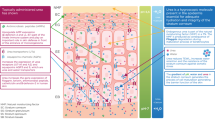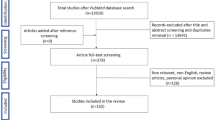Abstract
The emerging resistance to schistosoma has been paid much attention and is in urgent need for a novel strategy to control the prevalent parasitic zoonosis. In this study, the efficiency of hyperthermia therapy was investigated by the skin hyperthermia device. The survival rate of cercariae decreased from 68.15 % (37 °C, 5 min) to 0 (49 °C, 10 min) with the thermal dosages increased, which proved the preventing effect of hyperthermia therapy (P < 0.05). Therapeutic effects were assessed in Schistosoma japonicum-infected BALB/c mice. When the cercarial contact region of the skin was treated at 45–49 °C for 5 min within 8 h of infection, worm reduction rate (WRR) reached 74 %–83 % (P < 0.01). The sensitivity of adult schistosoma to heat was also investigated using microwave intraperitoneal hyperthermia (thermal dosages 42–43 °C, 20 min). The WRR, hepatic shift rates and egg reduction rates were 23.7 %, 40 % and 30 %, respectively, comparing with 80.2 %, 59.6 % and 53.9 % of praziquantel (PZQ)-treated group. Encouraging results have been obtained that hyperthermia can effectively kill schistosomula, especially with the appearance of cercarial dermatitis, while PZQ lacks efficacy against the cercariae. Thus, hyperthermia therapy would show significant benefit in preventing and treatment of schistosoma, especially in the early stage.


Similar content being viewed by others
References
Lewis FA, Tucker MS (2014) Adv Exp Med Biol 766:47–75
Colley DG, Bustinduy AL, Secor WE et al (2014) Lancet 383:2253–2264
Wang W, Wang L, Liang YS (2012) Parasitol Res 111:1871–1877
Singh R, Pandey PN (2015) Mol Biol Rep 42:689–698
Doenhoff MJ, Cioli D, Utzinger J (2008) Curr Opin Infect Dis 21:659–667
Cioli D, Pica-Mattoccia L, Basso A et al (2014) Mol Biochem Parasitol 195:23–29
He YX, Chen L, Ramaswamy K (2002) Exp Parasitol 102:99–108
Grazu V, Silber AM, Moros M et al (2012) Int J Nanomed 7:5351–5360
Hildebrandt B, Wust P, Ahlers O et al (2002) Crit Rev Oncol Hematol 43:33–56
Elman M, Lask G (2004) J Cosmet Laser Ther 6:91–95
Sadick NS, Laver Z, Laver L (2004) J Cosmet Laser Ther 12:276–283
Prasad N, Ghiya BC, Bumb RA et al (2011) Lancet 377:610
Zhuo ZH, Wang J, Zhai WM et al (2014) Chin Sci Bull 59:1317–1325
He X, Bischof JC (2003) Crit Rev Biomed Eng 31:355–422
Burke ML, Jones MK, Gobert GN et al (2009) Parasite Immunol 31:63–76
Acknowledgments
This work was supported by the Bill & Melinda Gates Foundation (Grant No. 1024516), to which the authors wish to express their thanks. The authors would like to acknowledge the technical assistance provided by Xinsong Luo and Mengzhi Shi from the WHO Collaborating Center for Research and Control of Schistosomiasis on Lake Region, Hunan Institute of Parasitic Diseases.
Author information
Authors and Affiliations
Corresponding authors
Additional information
Huixia Yang and Tao Tang contributed equally to this work.
About this article
Cite this article
Yang, H., Tang, T., He, P. et al. A novel and effective hyperthermia method for Schistosomiasis japonica prevention and treatment. Sci. Bull. 60, 1461–1464 (2015). https://doi.org/10.1007/s11434-015-0867-z
Received:
Accepted:
Published:
Issue Date:
DOI: https://doi.org/10.1007/s11434-015-0867-z




